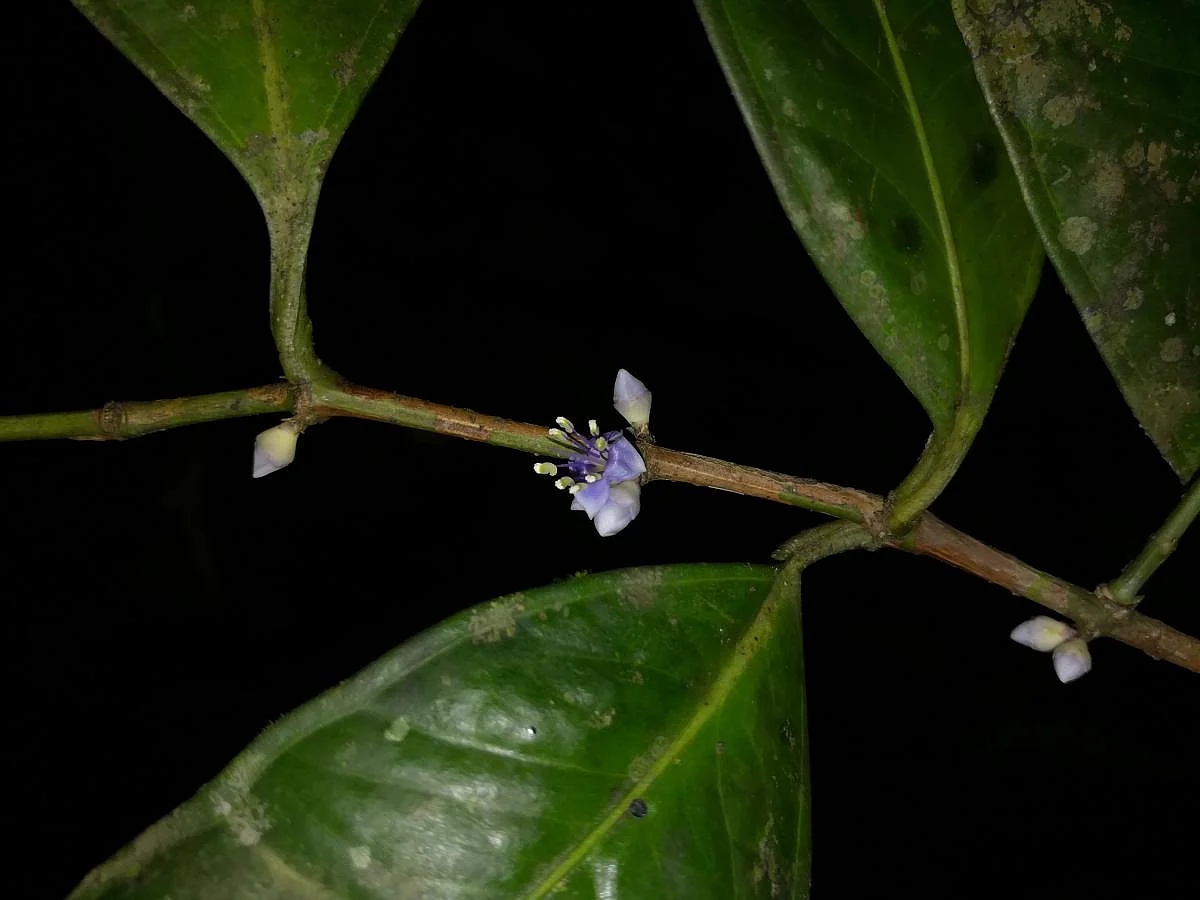
When Savinaya Malve, then a PhD scholar, visited Sagar taluk’s Hulakod village in 2017, he found what he thought was a plant belonging to the Memecylon genus. Locally called arachate, the species was growing in a protected orest area called Rameshwara Devara Kaadu, a sacred grove in Shivamogga district. Little did he know that this would be recorded as the first sighting of the rare plant in Karnataka. Earlier thought to be endemic to Sri Lanka, it was first found by researchers in Kerala in 2012.
It was spotted again in Tamil Nadu in 2014.
Savinaya pursued his research on the plant. When he went to Kolkata for a conference, he visited herbariums and confirmed that it belonged to the clarkeanum species. Once he realised the rarity of the plant, he gathered the villagers and explained the speciality of Memecylon clarkeanum to them. They named the plant udda ele arachate. The researcher also plans to put up a board so that people can identify it easily.
The plant flowers in October, and its fruiting takes in about 45 days. Its flower is very small, with a bud that is two mm in length, and a flower that measures about 5 mm.
“I checked when the plant fruited once. It had only 10-12 fruits. Each fruit has only one seed. This means that only
those many plants will come up if all
goes well and seeds germinate,” Savinaya says.
Savinaya began documenting the plant formally and published his research in 2020. He hopes to continue his study of the plant. He currently works with the Bengaluru-based Environmental Management & Policy Research Institute as a project scientist for the forest regeneration project.
Locals believe the plant could have medicinal properties. “We have seen and identified two other species of Memecylon in the village, which I use to treat herpes and all types of skin problems. We have seen only two plants of this long-leaf variety, so we have not tried using it in medicine. But I am sure it will have the same characteristics, as it is of the same genus,” says Subbarao Aneguli, a native medicine expert from Hulakodu.
The village of Hulakodu is home to a rich forest area that has been preserved over the years. “People have never touched or cut down the trees and plants here. The forest is attached to the Rameshwara temple, and has existed for long time,” Subbarao explains.
Villagers began referring to the forest as Rameshwara Devara Kaadu (sacred grove) 12 years ago, after its boundaries were fixed. Devara kaadus, which host many rare varieties of plants, get better care from the Forest Department.
Rare water plants
Subbarao says that the devara kaadu is home to rare plants like Saraca asoca (the Asoka plant) and Syzygium travancoricum, a rare water plant that is locally called ‘neeru nerale’. The latter is believed to have medicinal value, and is used to treat diabetes and dysentery.
There are 40-50 plants of neeru nerale in a swamp in the devara kaadu. “This plant needs the swamp for its survival, else it will become extinct,” says Keshava Hegde Korse, a conservation biologist who has conducted research about the biodiversity in Rameshwara Devara Kaadu.
According to him, “The roots of these plants need to always remain in water in order for them to complete their reproduction cycle. Swamp areas exist in very few parts of the Western Ghats. Without swamps, these plants will become extinct.”
Neeru nerale is one such rare species. “We thought it existed only in Kerala, then we found it in Shivamogga and Dakshina Kannada districts in the last two decades,” Keshava Hegde adds.
Swamps deteriorate because of encroachment, land acquisition and land degradation. In addition to hosting rare, endangered species that are endemic to the area, they also support wildlife and locals with forest produce.
These water bodies have great ecological significance, as they are perennial water sources. “River Sharavati gets its water perennially from such swamps. This is highly important for the water-yielding capacity of the area,” explains Hegde.
Since the swamps need special protection, a group consisting of local NGOs, the panchayat, the village forest committee, the temple management committee and local farmers has now approached the government, seeking a ‘conservation reserve’ tag for the swamp.
“This tag will not affect the rights of locals to procure forest produce. The area will become a protected natural heritage site and will get better care,” sums up Hegde.